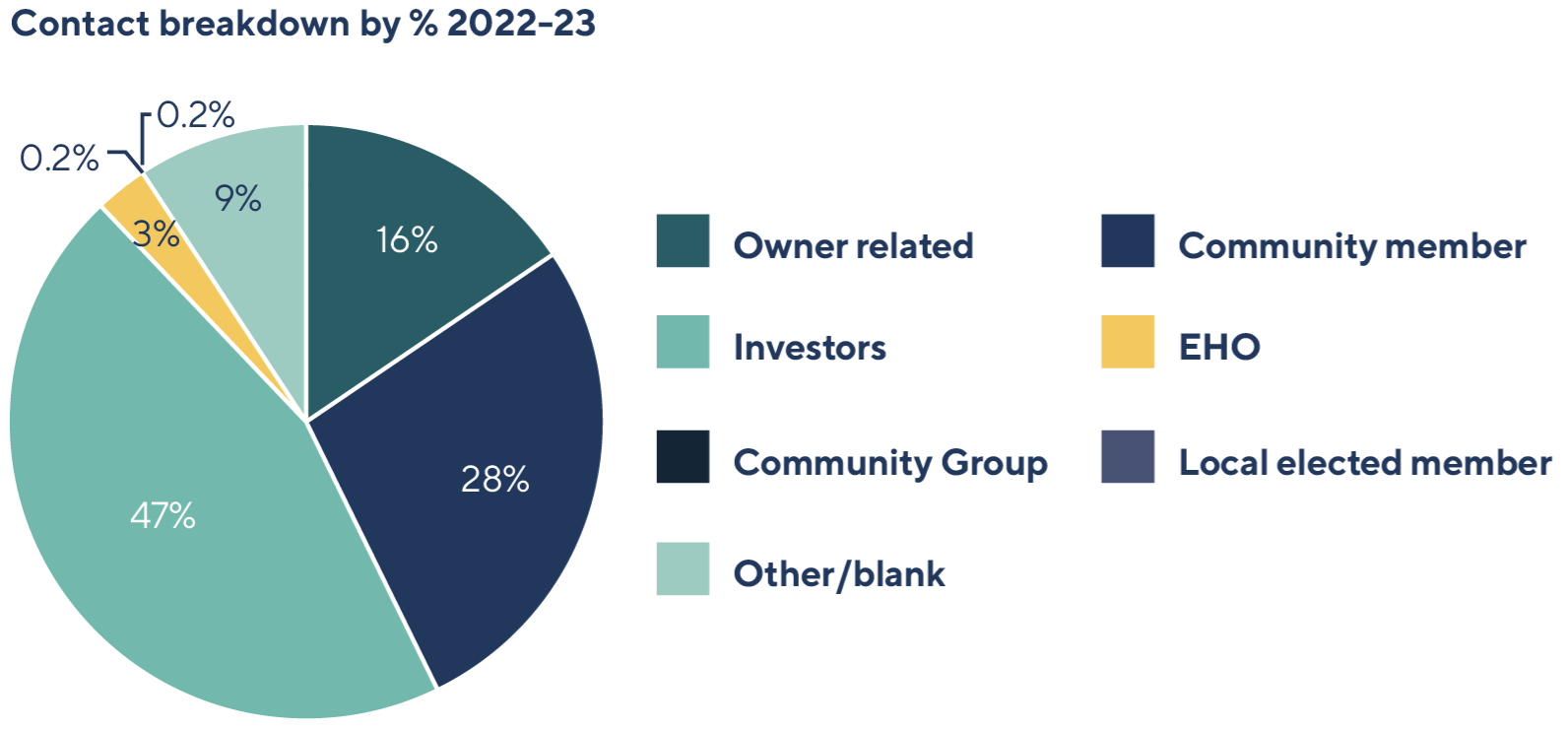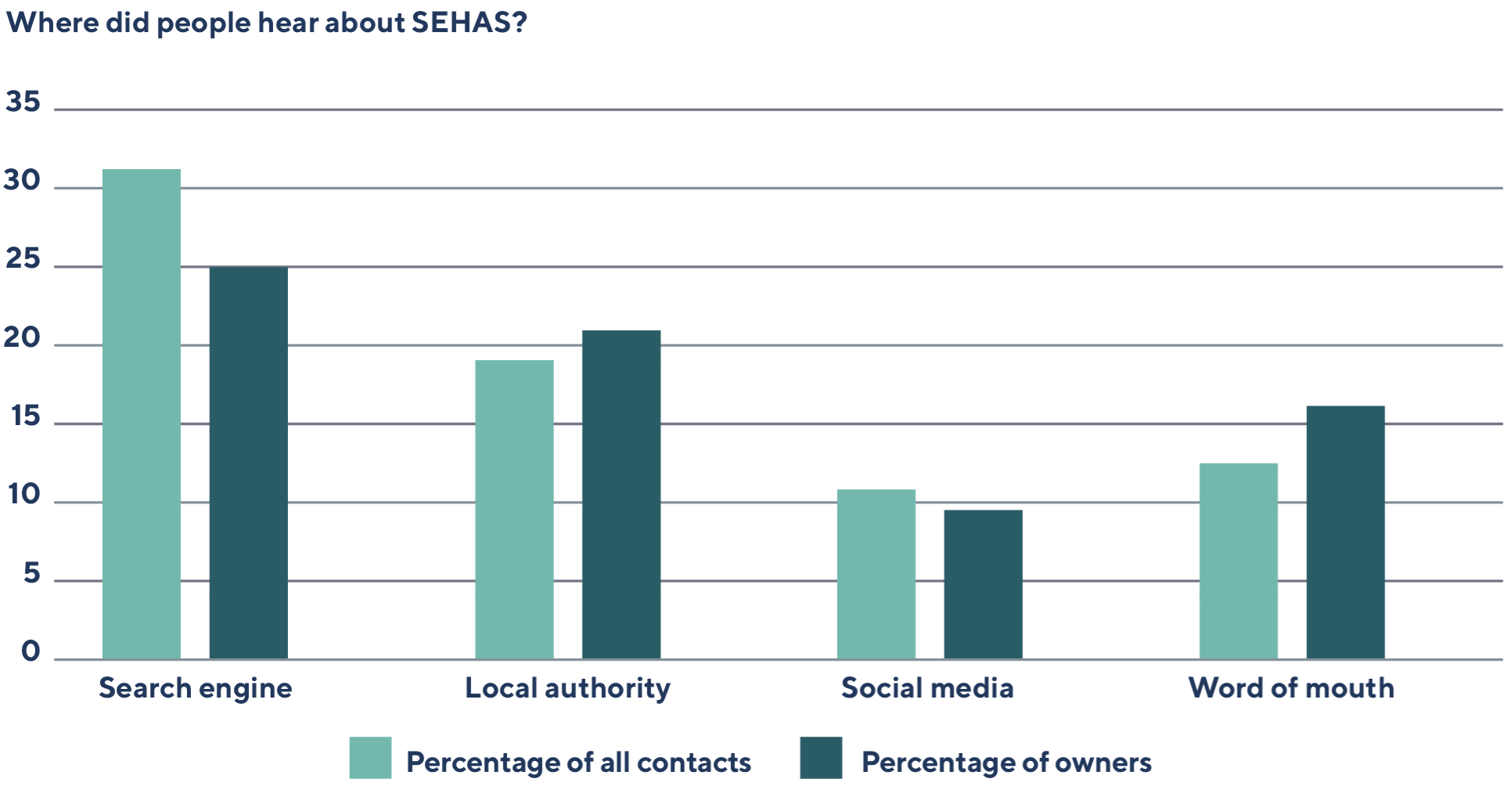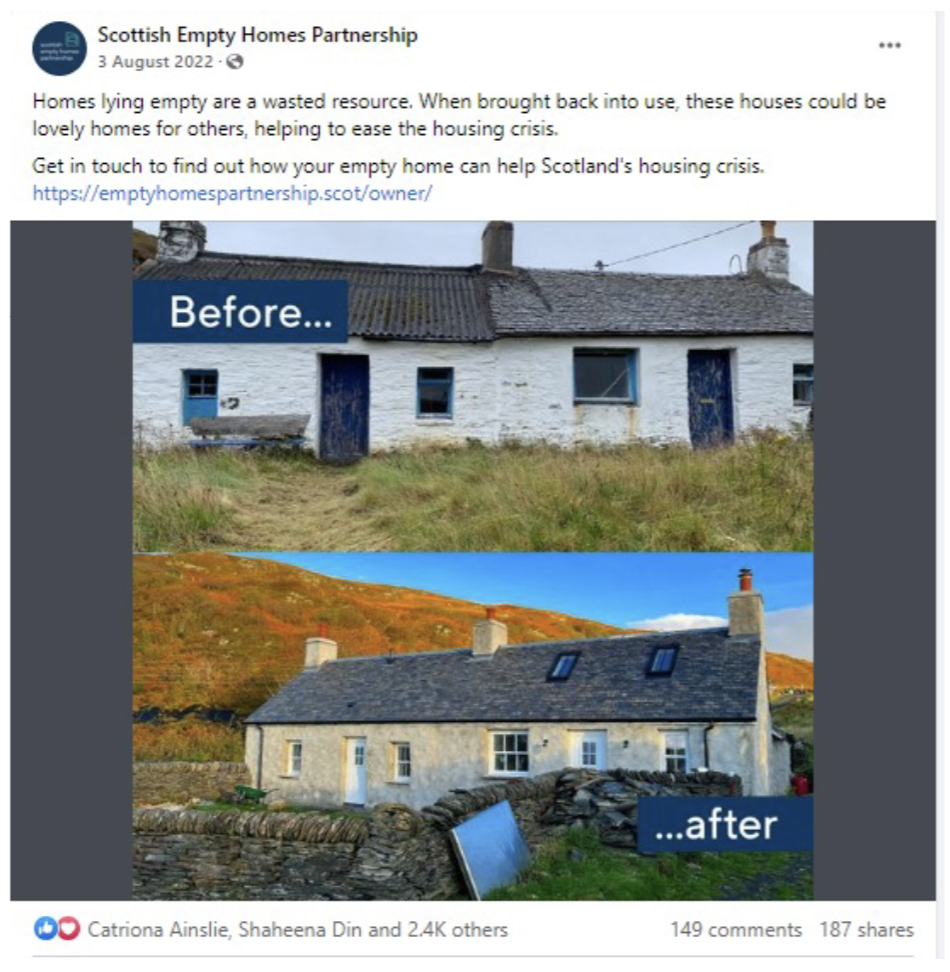Uploaded 15/06/23
Annual Impact Report 2022 - 2023
The Scottish Empty Homes Advice Service (SEHAS) helps anyone with an empty homes issue. Since the service review in 2019 we broadened our reach and are developing resources in line with the Scottish Government’s Housing to 2040’s pledge to develop a support package for owners as a preventative measure. We received 441 contacts this year, an increase of 3.5% compared to 2021/22. This brought us close to our target number of enquiries set as 450.

Owner related contact (including family members) accounted for 16% of contacts, compared to 13% in 2021/22. This increase is encouraging against our stretch target of 25%. Direct contact is where we can be most effective in encouraging owners to bring more homes back into use.

The insight from advice cases is vital to the SEHP’s overall work to promote evidence based benefits of bringing empty homes back into use and to encourage diverse involvement across Scotland.
How is SEHAS reaching people to gain this insight?
We recorded where people heard about our service in 50% of cases.
For owner related contacts we recorded this in 44% of cases.

Often owners and neighbours make contact after speaking to their local authority. SEHAS is set apart as we are an independent voice.
More contacts head about us via word of mouth. This shows even where we are not reaching owners direct, word is getting out via digital marketing and wider SEHP coverage.
Social media marketing
This boosted post was the most successful attracting 216 comments, over 2,000 likes and 187 shares. The volume of comments showed public perception of empty homes related issues, referencing connected topics including, second homes, affordable housing, planning, the rising cost of renovations, especially in remote/ rural location and owners’ experiences.

Owners
The Scottish Government’s Bringing empty homes back into use – approaches and interventions: evidence scoping review, published this year, notes that “homes can be empty for various and complex reasons at individual, societal and structural levels”. Public perception of why homes become empty sometimes differs from the harsh reality that owners face. Driving enquiries is not just about volume but about the stories behind these, the Facebook comment below is one of many that evidences how owners are feeling.
“There is a lot more going on than simply an empty house.”
The success of SEHAS’ approach lies in supporting people and not simply focussing on the property. This reflects the individual barriers to bringing an empty home back into use and providing advice on all the options as well as emotional support is often needed. The impact is demonstrated by the owner testimonies below.

Neighbours
Neighbours account for over a quarter of SEHAS enquiries but there are limited tools to quickly address the problems they face. Particularly where owners can’t be traced or aren’t engaging.
SEHAS compiled a neighbour toolkit, split into separate guides covering the range of topics, including disrepair, environmental health, and sharing their story.
This was the result of a wider scoping exercise to understand the limits of current building standards and environmental health legislation. This involved insight from EHOs, Environmental Health and Building Standards professionals. EHOs have provided feedback on the guides which was positive, with all agreeing they would prove informative to neighbours.

Investors
Our work to refine the type of investor enquiry we receive continued through our Empty Homes Adviser’s “Unlocking empty homes, tips for investors” blog. This was a response to a volume of speculative enquiries asking for a list of empty homes. Collating information reduced the volume of work responding to general investor queries. It also changed the type of enquiry with more investors with a confirmed plan to bring homes back into use, or identifying specific properties.
